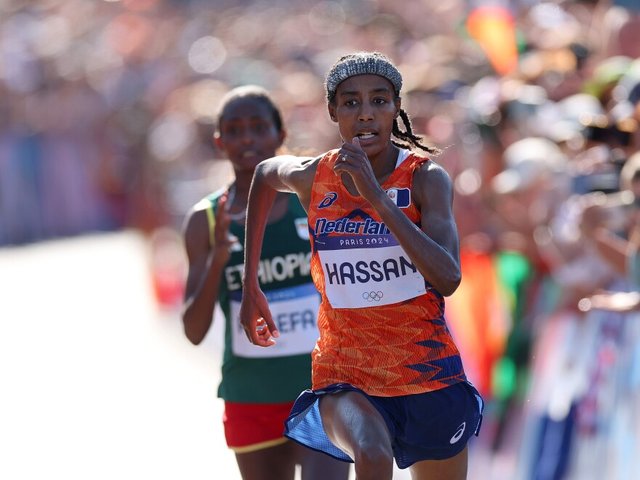
Theory: It would be interesting to see if marathon and other long-duration running events among elites when it's intensely competitive (such as the Olympus) have a smaller gap time between 3rd and 4th than between 4th and 5th and so on down the line, with the gaps getting bigger on average as you fall down the rank.
If it's true that athletes are not "performance machines" and actually are somewhat psychologically driven, I'd expect that everyone isn't really "trying their best" by default, even if they think they are. I'd expect that there would be an intense drive to not be 4th, because it's particularly "tragic" insofar as you're the first one to not get a medal. So I'd expect folks give it their all at the end. Well, not exactly. Because that might suggest a constant as 3rd does it too. But I'm assuming that in the final few seconds you can't look backwards and feel the push from behind. But the one in 4th is very aware, and will drop the hammer, pushing beyond the limit they might have through they could draw upon if they were 27th trying to be 26th.
I'm not sure what I'd expect about the gap times between 1st and 3rd. Probably any effect I'm talking about it still there, but it's washed out by the athletic performance differences among the top 1, 2, or 3, where they might be extraordinary individuals. That is, I'd expect due to discontinuously odd capacity (I assume mostly phenotype but could be training and even psychology) that the gold medalists might on average have a larger gap to the one behind them than running on average down the the the ranks have between them. It might be possible to see an effect with enough statistics, but it would be buried in a lot of noise.
And I am simplifying because I don't expect it's linear down the ranks. I'd expect it's a close to a Gaussian. So I'm proposing that it's a Gaussian from, say, 5th and beyond, and not necessarily with the gap distributions by rank (in other words, I'm not saying there are bigger or smaller gaps at any particular place in the rank, it's just a Gaussian distribution of you map frequency against gap time, not against outcome rank). But for the first 4 places I don't expect it's a random distribution.
It would also be interesting to test the 3rd vs 4th hypothesis by having statistics for particular runners, across their events. But I suspect there isn't enough data to be able to do it. The hypothesis would be that a particular running who winds up 3rd or 4th is going to have an anomalously fast personal time (so, relative to themselves, as if racing themselves, not compared to others) compared to when they're 5th or 6th. Now in some sense it's like "duh" because of course they did better, they ranked higher. But what I mean is that the amount by which they are faster when they're 3rd or 4th is a greater gap than when they rank lower, even though if anything you'd expect that the gaps get smaller as you get higher rank because they are approaching their limit. I'm suggesting there is an anomalous bump in 4th to 3rd. I am not sure if I expect it between 3rd and 2nd and 2nd and 1st, but maybe also.
You know what, let me go out on a limb. I will expect a personal anomalous bump for the top three slots if and only if there is a very small gap time between the competitor at issue and the one who they beat or lost too. So the hypothesis is this: A running who got 1st or 2nd is anomalously much faster than their other personal times if and only if it's a narrow finish. As the gap in finishing times grows, so that near the end of the race it wasn't seen as plausible by the person behind that they can close the gap and increase their rank by one (or hold on against someone behind), then the extra horsepower doesn't show up.